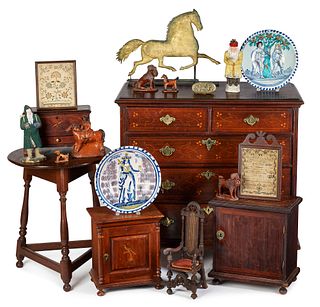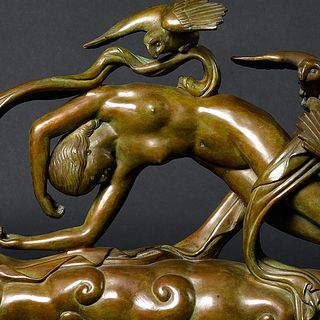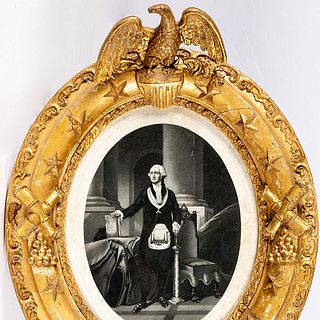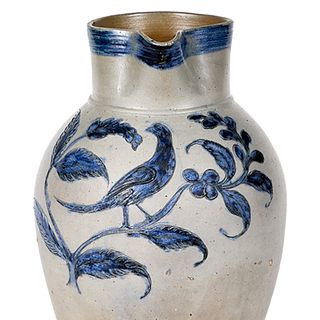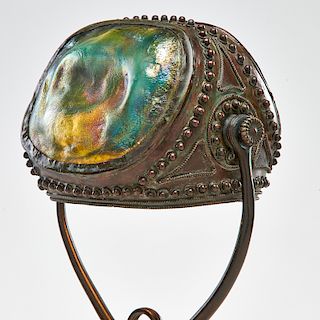Collecting Political Campaign Flags
Another important election season is upon us. Political campaign literature and television commercials are already besieging us. Hundreds of millions of dollars will be spent on these campaigns nationwide, with each ad vying for our attention – and our vote. In this electronic age, few of us realize just how much electioneering has changed over the history of the republic. Imagine flying a flag with a portrait of your favorite presidential candidate; my how things have changed!
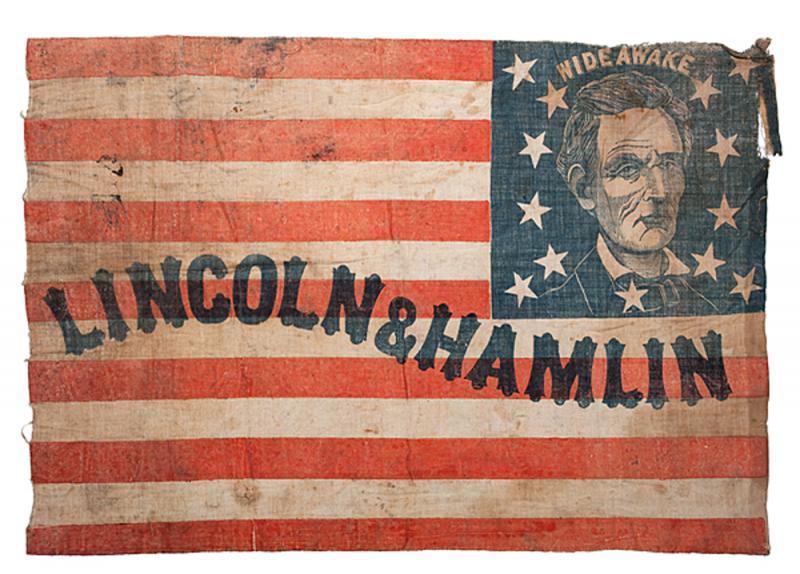
In the early years of our country, there was precious little of the sorts of activity that we associate with the heated political campaigns of today. A scattered population with no real means of mass communication meant that office seekers had little way to communicate to the general voter. This was particularly difficult in areas west of the Allegheny and Appalachian Mountains. After the Revolutionary War and War of 1812, as settlers streamed into this vast area, the situation changed.
Tippecanoe and Tyler Too
The presidential election of 1840 is generally viewed as the turning point in political campaigning, and marks the emergence of real electioneering. The Whig Party trotted out the old war horse William Henry Harrison as their candidate, running against New Yorker Martin Van Buren. Harrison’s supporters played upon his role as the hero of the Battle of Tippecanoe. They touted him as “Old Tip” and coined the phrase “Tippecanoe and Tyler Too,” with a nod towards his vice-presidential running mate, John Tyler. Harrison clubs sprouted up all over the country, producing a myriad of campaign ephemera, and numerous printed textiles. Today, the early flags and banners are recognized as important, and valuable, collectibles, with many fetching up to five figures.
From Lincoln to McKinley
Collectors pay premium prices for so-called “jugate” examples. These are textiles that have portraits of both the Presidential and Vice Presidential candidates on the flag, along with a campaign slogan. Naturally, the most desirable textiles are those produced for the candidates who actually won, or went on to have distinguished careers in office. Flags and textiles associated with the 1860 and 1864 election of Abraham Lincoln, for example, are some of the most desirable. A large flag with Lincoln’s portrait from the 1864 campaign sells readily in the mid-five-figure range.
Not all flags popular with collectors came from great presidents, however. Flags from the disputed election of 1876, when Rutherford B. Hayes and William Wheeler were pitted against Samuel Tilden and Thomas Hendricks with the final outcome decided by the House of Representatives, generate considerable excitement among collectors whenever they appear on the market.
While campaign flags were used well into the 20th century, their greatest period of popularity was from 1840 up until the campaign of William McKinley in 1896. Afterwards, inexpensive celluloid, lapel buttons became wildly popular, and people began sporting a portrait of their favorite candidate along with a slogan. Flags ultimately were doomed, but they live on with collectors and political history buffs.
- Artist Spotlight: David Gerstein, Sculptural Pop in Bold Color & Motion
- The History of Rolex Watches: Innovation, Precision, and Enduring Prestige
- Preview the December Doyle+Design Auction: A Celebration of Modern & Contemporary Mastery
- Billings Winter Design 2025: A Celebration of Modern Mastery Across Eras
- The Ultimate Holiday Gift Guide: Luxe Finds From Bidsquare’s Finest Auctions
- Fine & Antique Jewelry Sale: A Curated Journey Through Craftsmanship & Design
- Upcoming Auction Spotlight: Doyle’s Fine Art: 19th Century & Early Modernism
- Entertain with Style This Holiday Season: Highlights from Doyle’s December 8 Auction
- Six Standout Lots from Newel’s Fine Jewelry, Timepieces & Luxury Handbags Sale
- Artist Spotlight: Roy Lichtenstein, Pop Art’s Master of Bold Lines & Bigger Ideas



 EUR
EUR CAD
CAD AUD
AUD GBP
GBP MXN
MXN HKD
HKD CNY
CNY MYR
MYR SEK
SEK SGD
SGD CHF
CHF THB
THB

